CARLETON PROJECTS
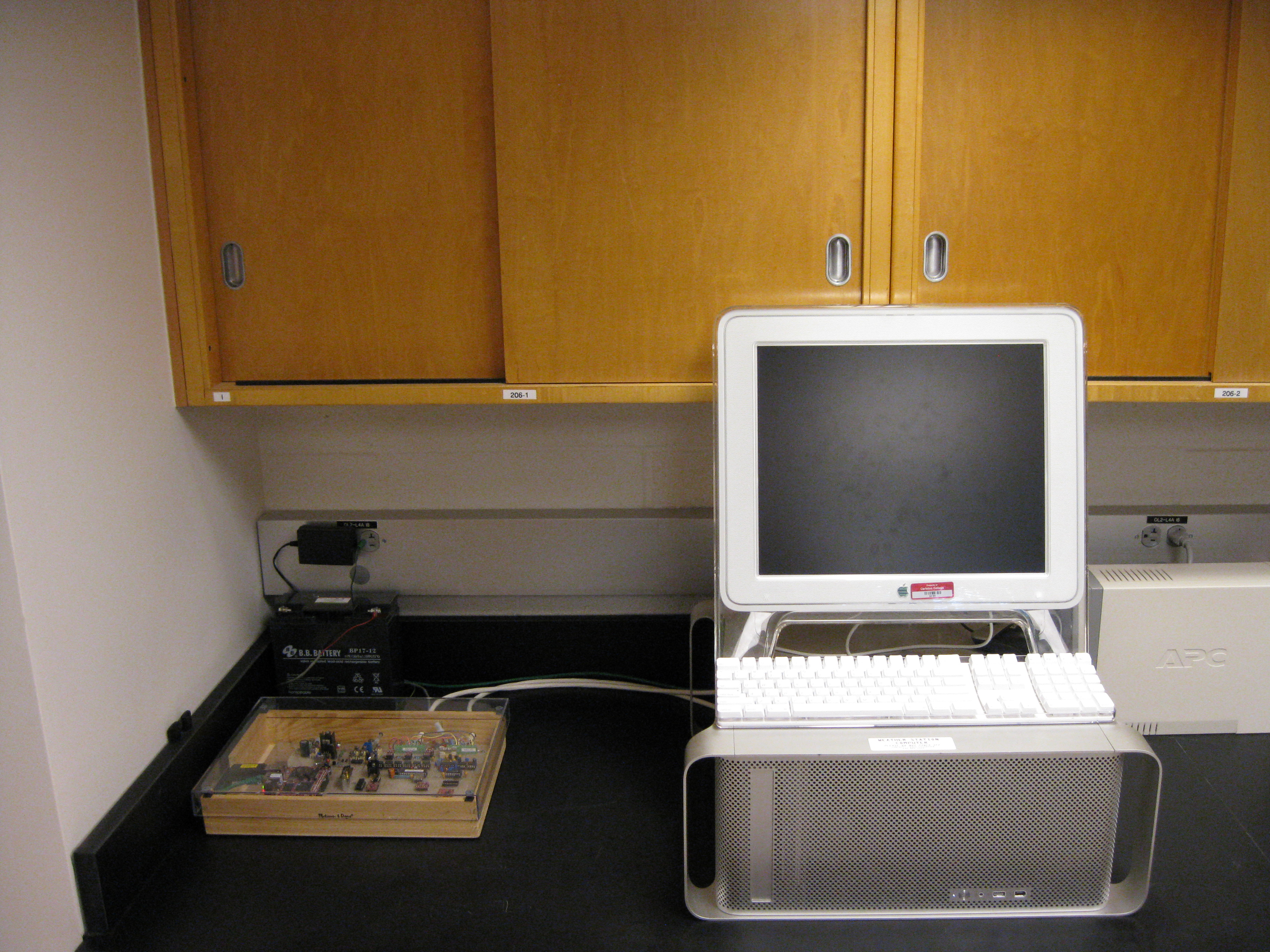
This is the Carleton Weather Station, at least the computer end of
it. The data acquisition system is to the left and the web
server is the Mac computer. It is located in Olin 206.
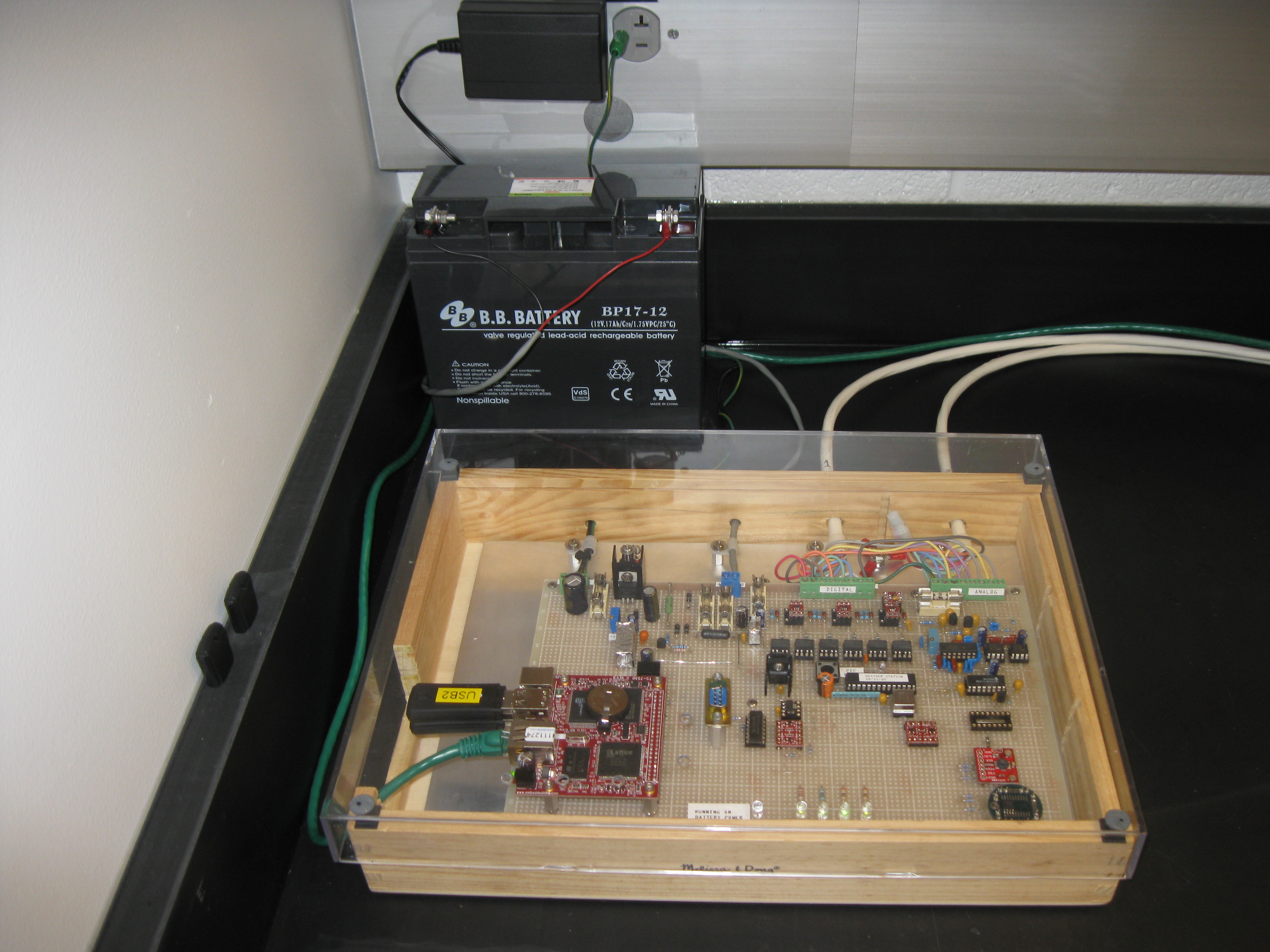
This is the Carleton Weather Station's data acquisition system.
This replaced a 1995 Mac and some daq boards. This daq system is
based on a Microchip
PIC18F876. It has its own battery back-up.
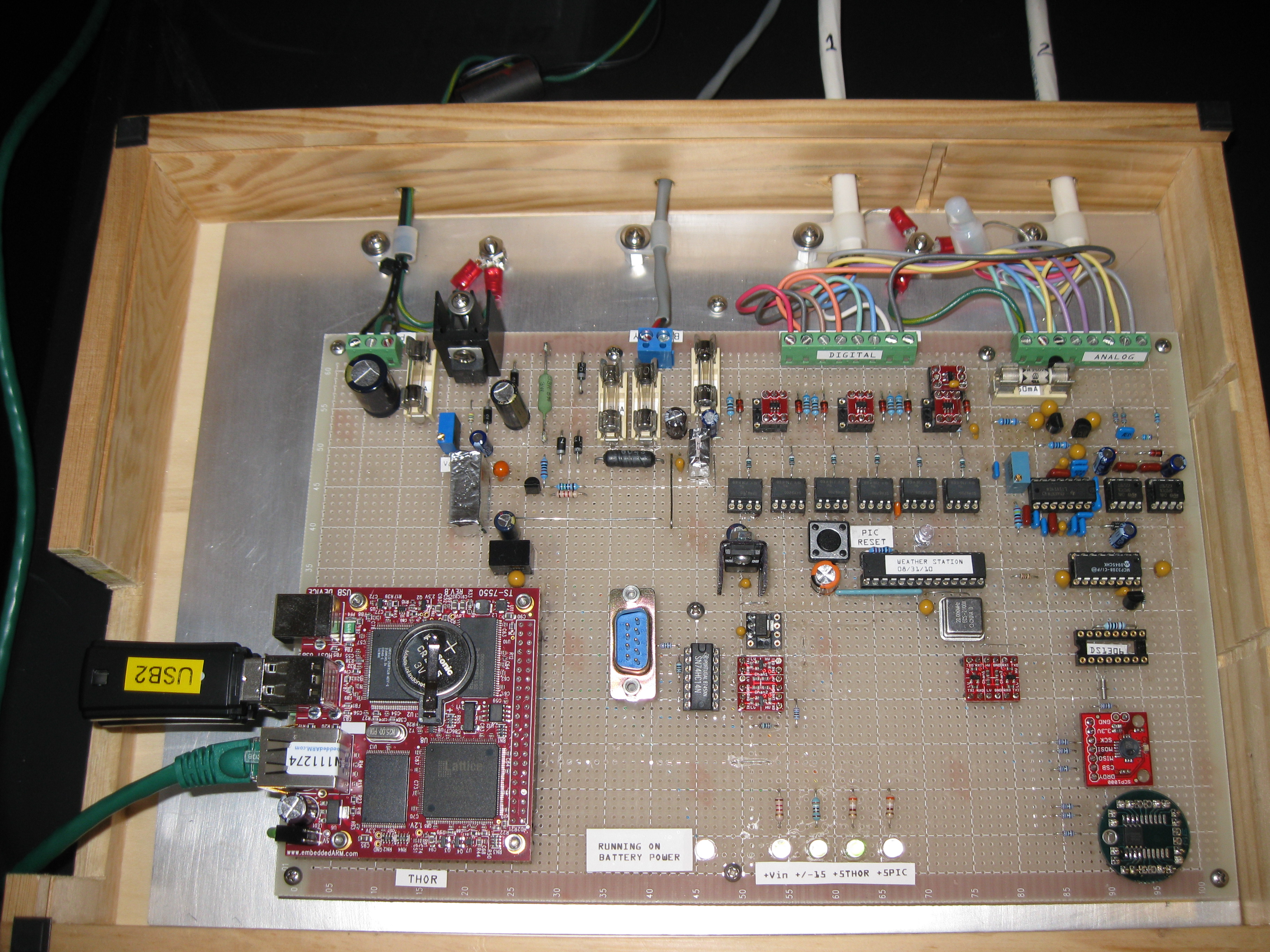
This is a more detailed picture of the Weather Station daq board.
The board in the lower left interfaced with the PIC and the web
server. It also stores the
data in the thumb drives.
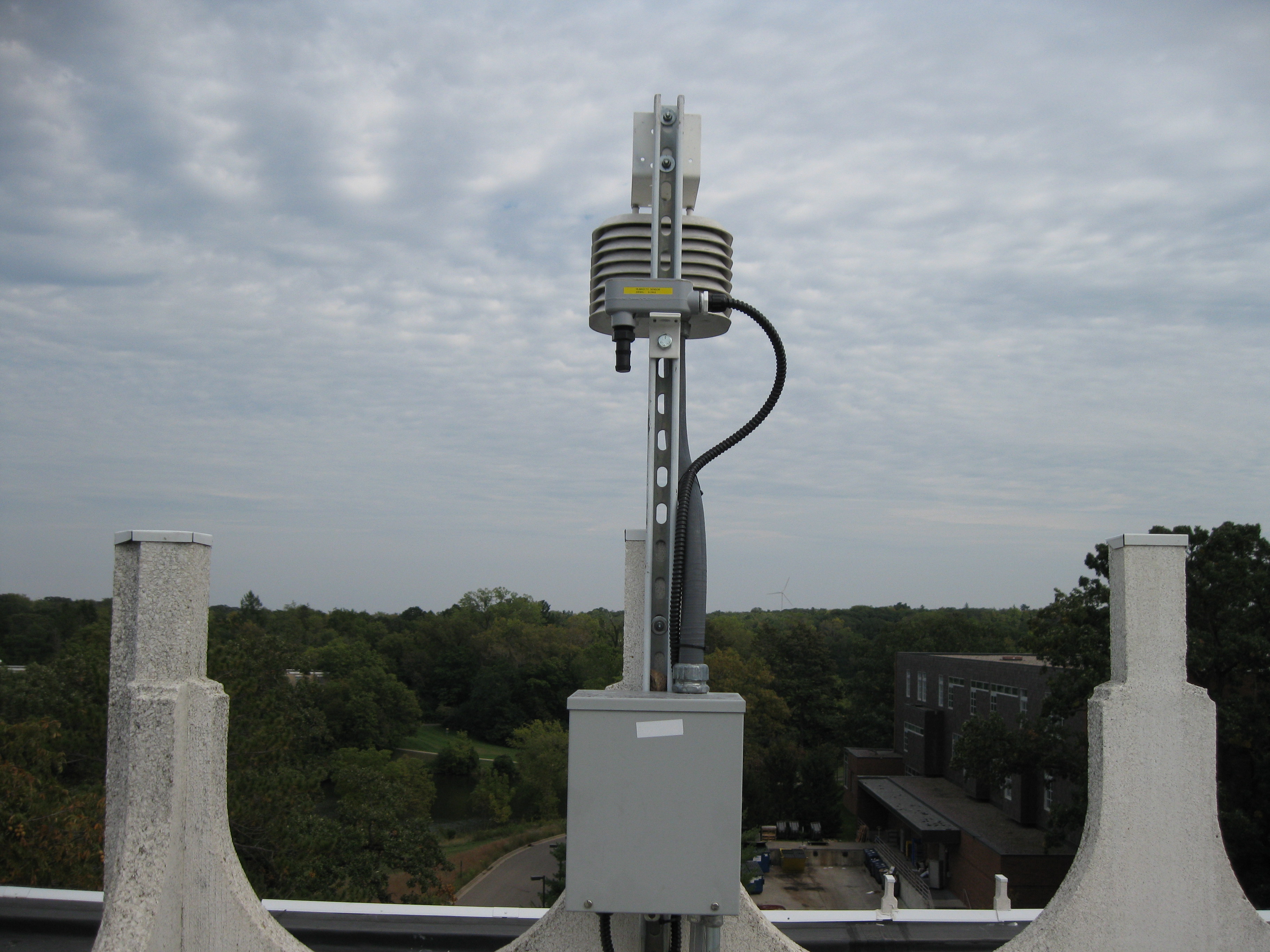
This shows two of the sensors located on the roof of Olin Hall.
The black tube pointing down houses the humidity sensor. Inside
the 'stacked plates' is
the temperature sensor. The view is looking east, and in the
distance you can see the Carleton wind turbine. (lower right
center)
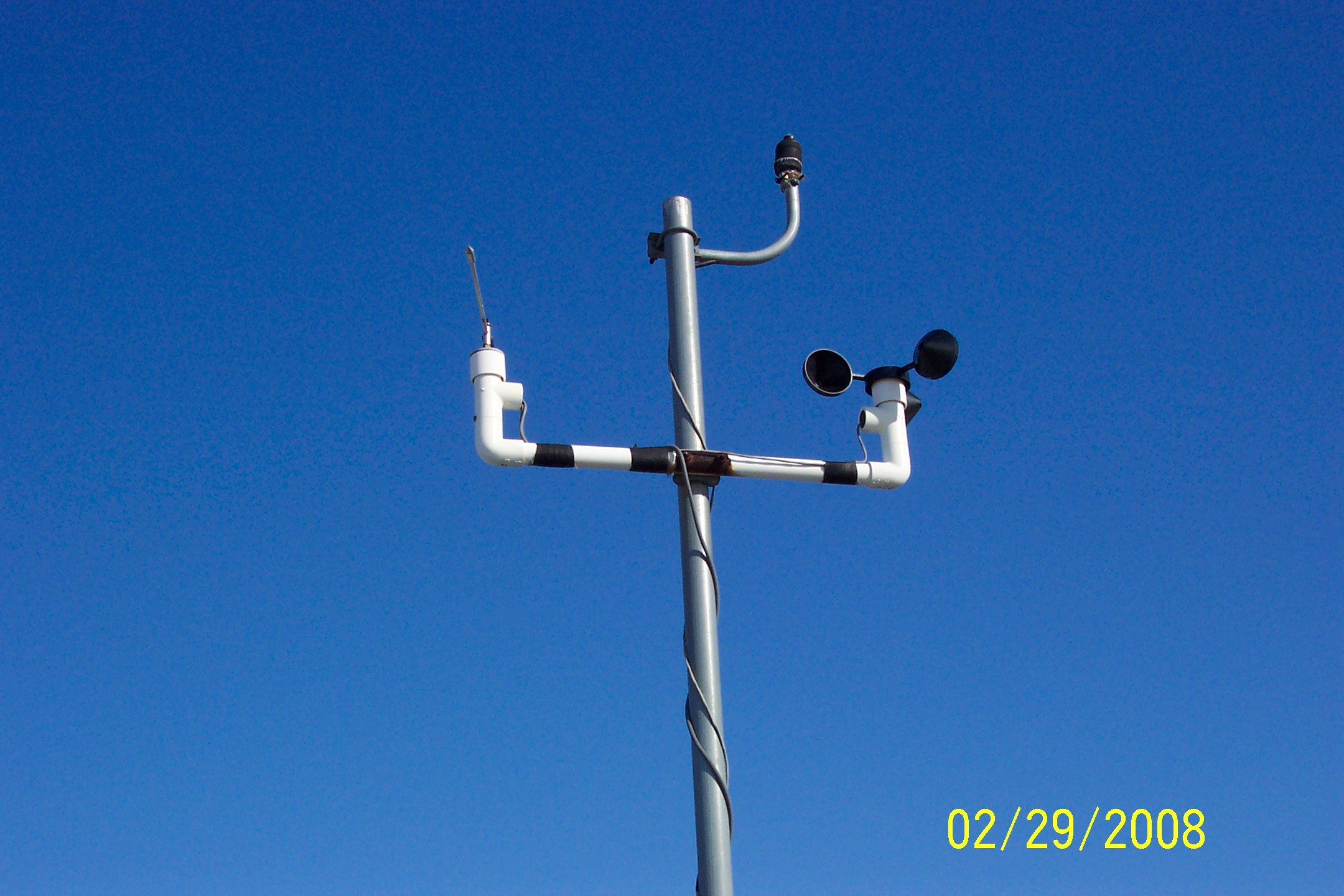
Located on this mast are the wind direction sensor (left side), solar
radiation sensor (top center), and wind speed anemometer (right).
These are located
on the roof of Olin Hall.
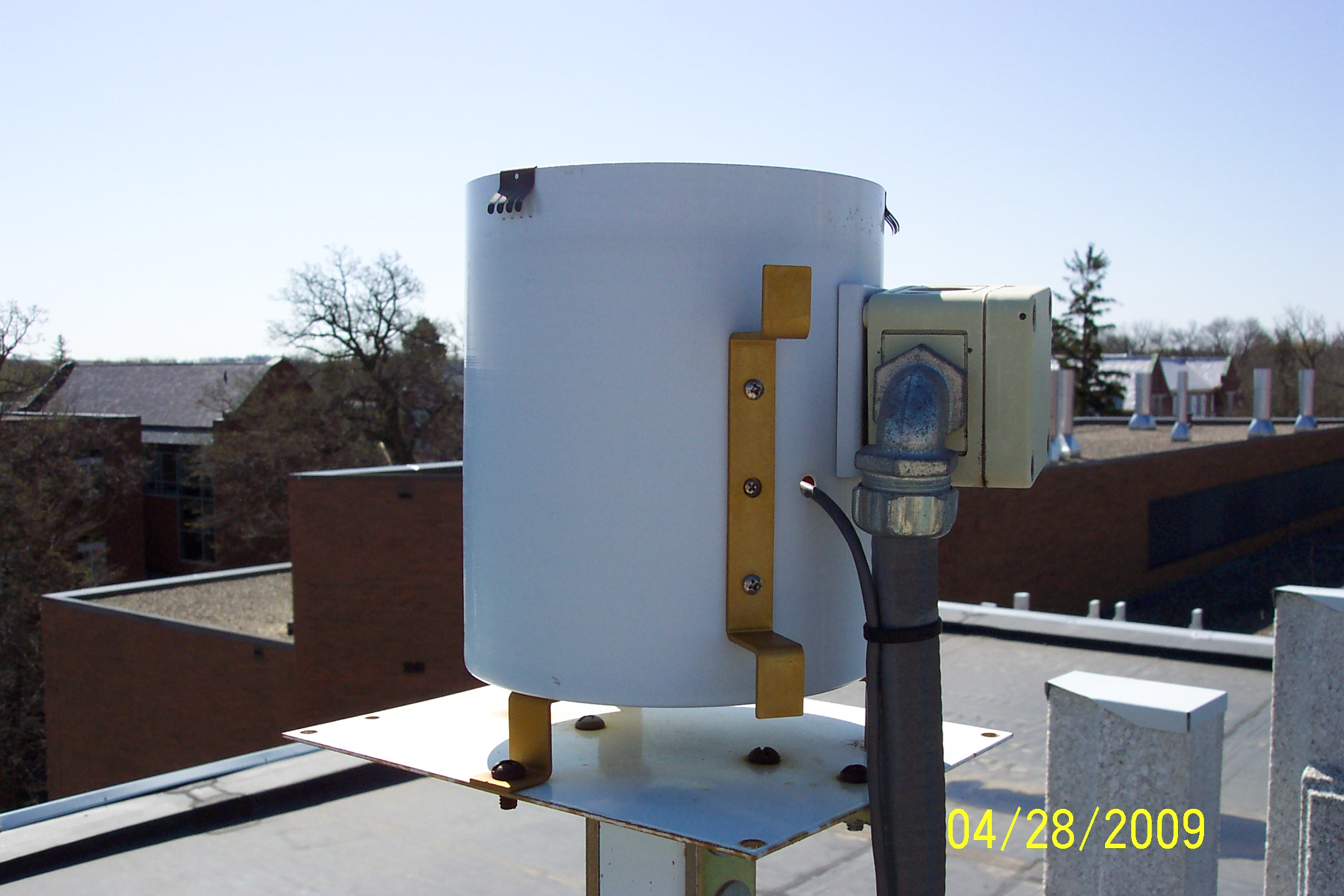
This is the rain gauge located on the roof of Olin Hall. Inside
the top is a funnel which directs water collected in the 8" opening
down to the tipping bucket.
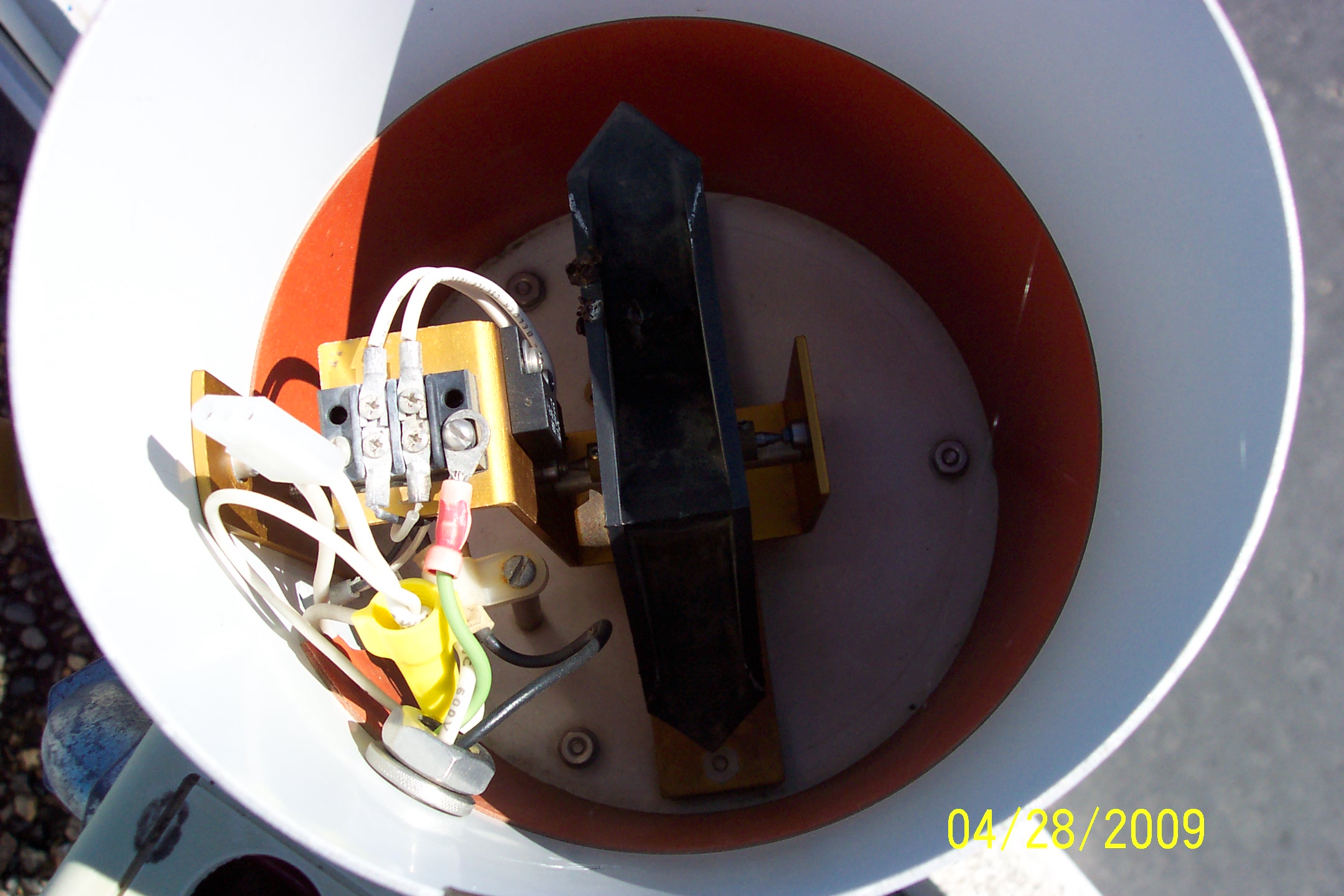
This is what the inside of the rain gauge looks like with the funnel
removed. It is kind of hard to see but the black object in the
middle is the tipping bucket.
When one side fills with .01" of rain it tips to the other side and
sends a pulse to the data acquisition system. The daq system
counts these pulses and
displays them to the nearest .01" of rain (or melted snow in the
winter).
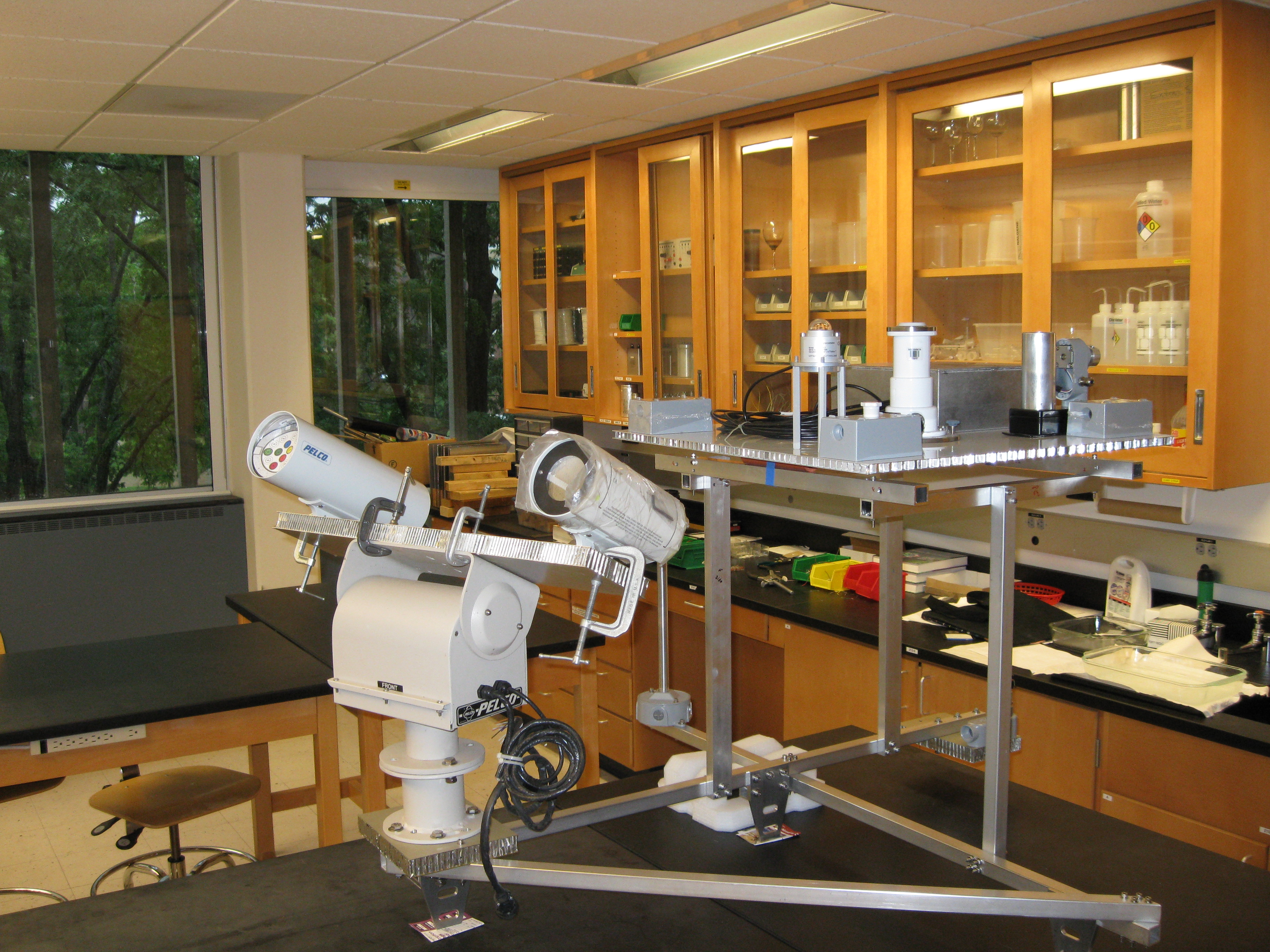
This is a new instrument platform under development to also go on the
roof of Olin Hall. The left shows two radiometer instruments on a
pan-tilt platform
that will track the sun. The sun will be the light source and
between the sun and the sensors is the atmosphere, which will be sensed
at different wavelengths
to monitor its changes relating to solar absorbtion. On the
platform on the top are two pyranometers, a UV radiometer, a sky
temperature sensor, a full sky
camera, a Photosynthetically Active Radiometer (measures the
visible light spectrum used by plants), an ambient light sensor, and
some special sensors.
An additional boom extends out with a special barometric pressure head
that compensates for wind effects, a black globe sensor that simulates
how
outdoor animals might experience sunlight, a microphone to 'hear'
thunder, and a detector that can differentiate between different types
of precipitation.
There are also lightning detectors that work like AM radios to detect
static as well as an optical sensor that can detect the flash.
Also located on this
structure are precipitation sensors that will signal the first drop of
rain, an antenna for the Lyman Lakes buoy, and a webcam allowing users
to view
the inner part of campus.
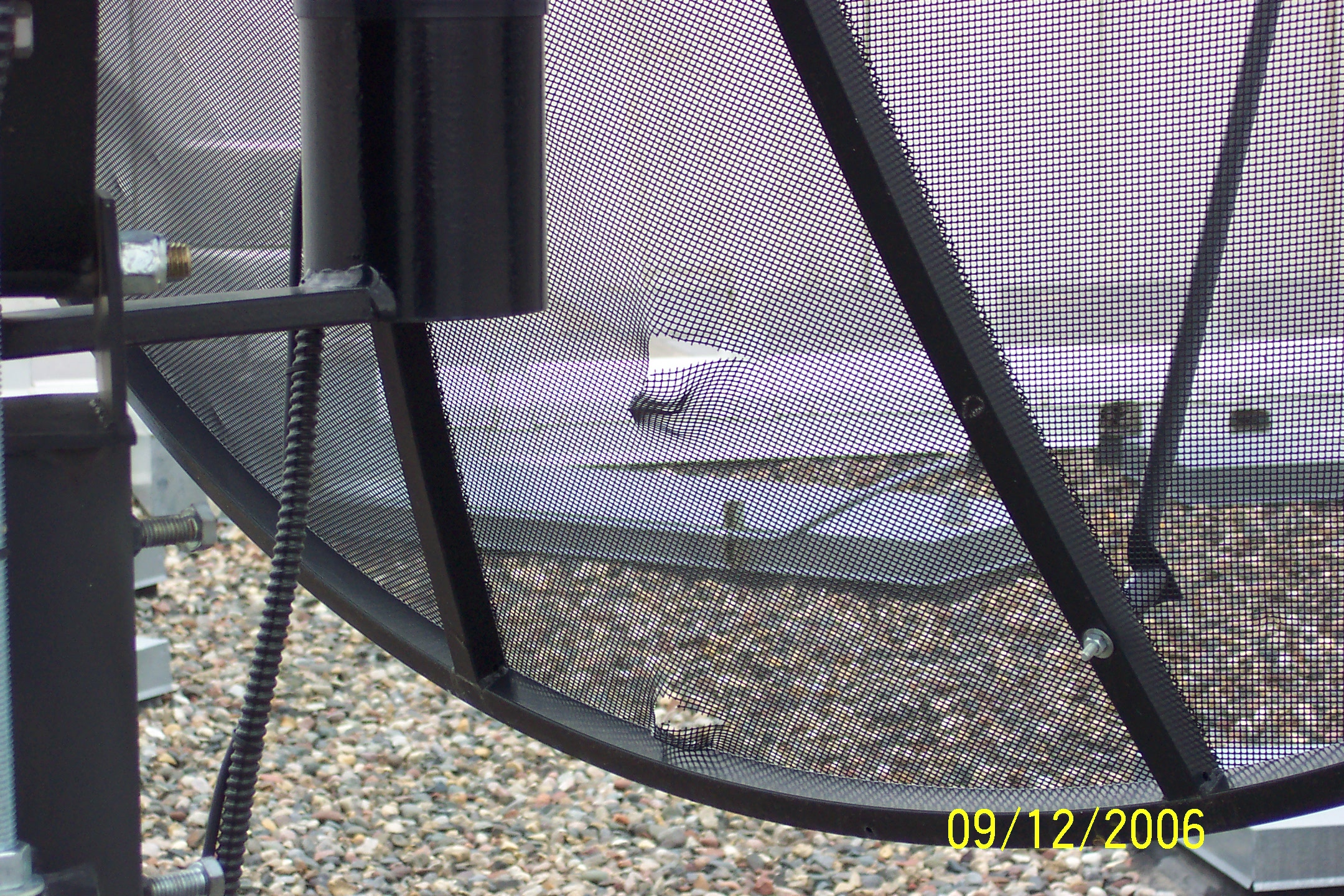
Note the two holes in the small
radio telescope dish antenna located on the roof of Olin Hall.
These are the result of the recent hail storm that blew thru. The
top of the dish has lots of
dimples in it also.
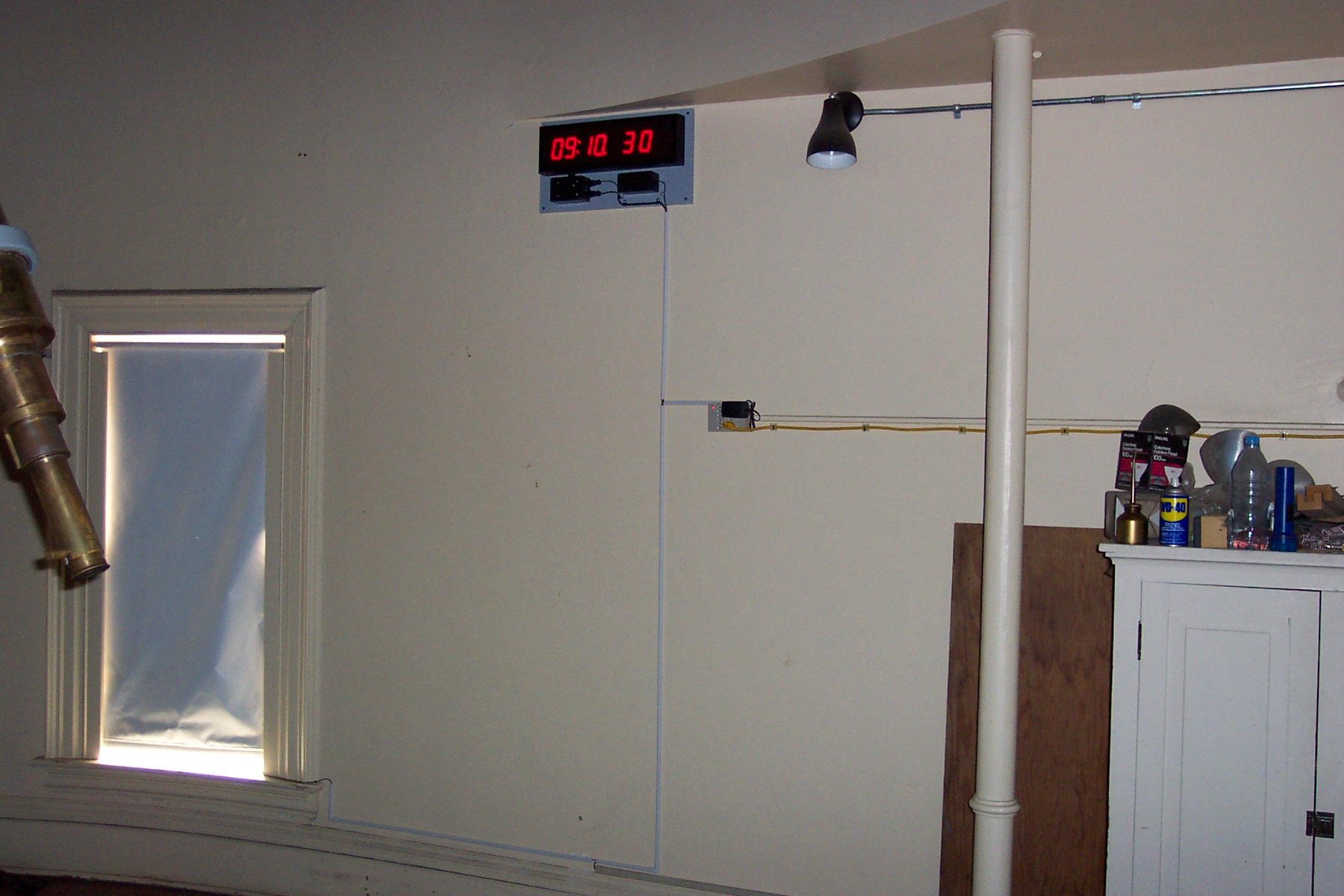
The
new
sidereal clock located in the 16" dome. It gets its time from GPS
and automatically
dims as the dome gets darker or via
wireless control.
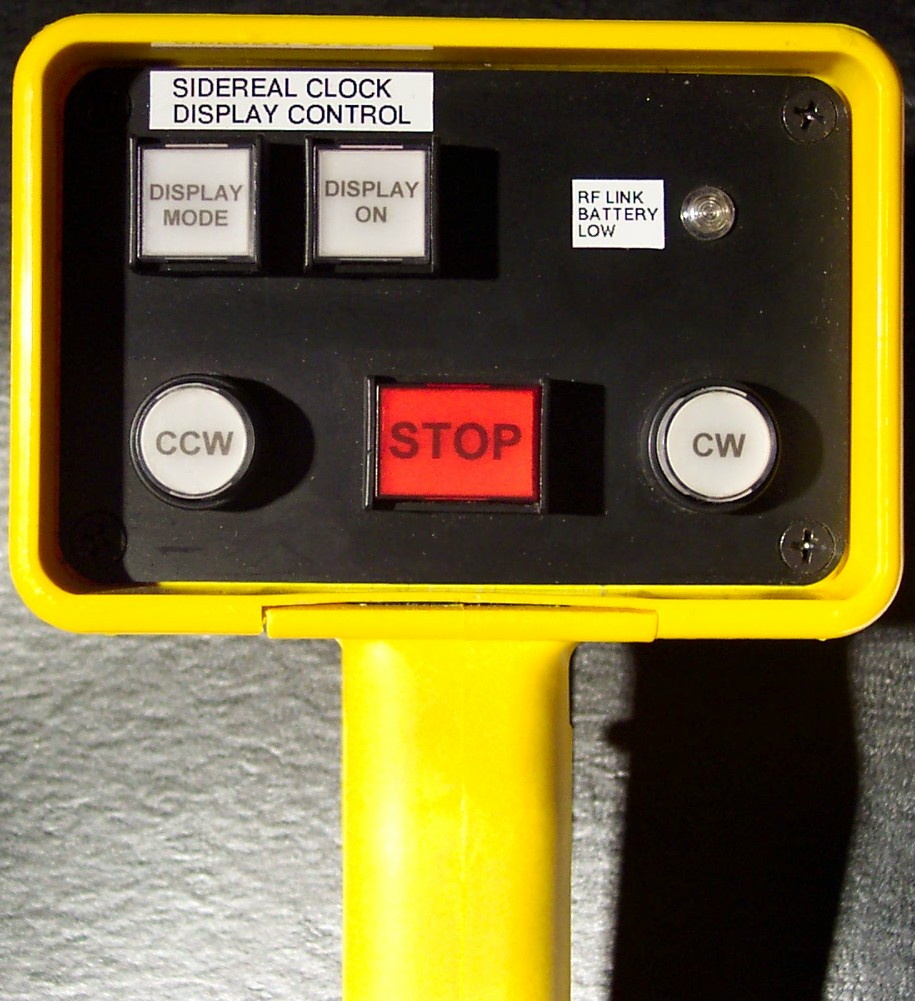
This is the
wireless control pendant that allows the operator to rotate the dome
clockwise or
counter-clockwise and then stop
its rotation. It
also has buttons to control the intensity of the
sidereal clock display and an indicator to notify when the RF link's battery is low.
The pendant
also has the cool abiltiy to illuminate all the buttons red when it is
picked up. It does this by
sensing the hand's capacitance. This allows the operator to see
the buttons while working in
a darkened dome.
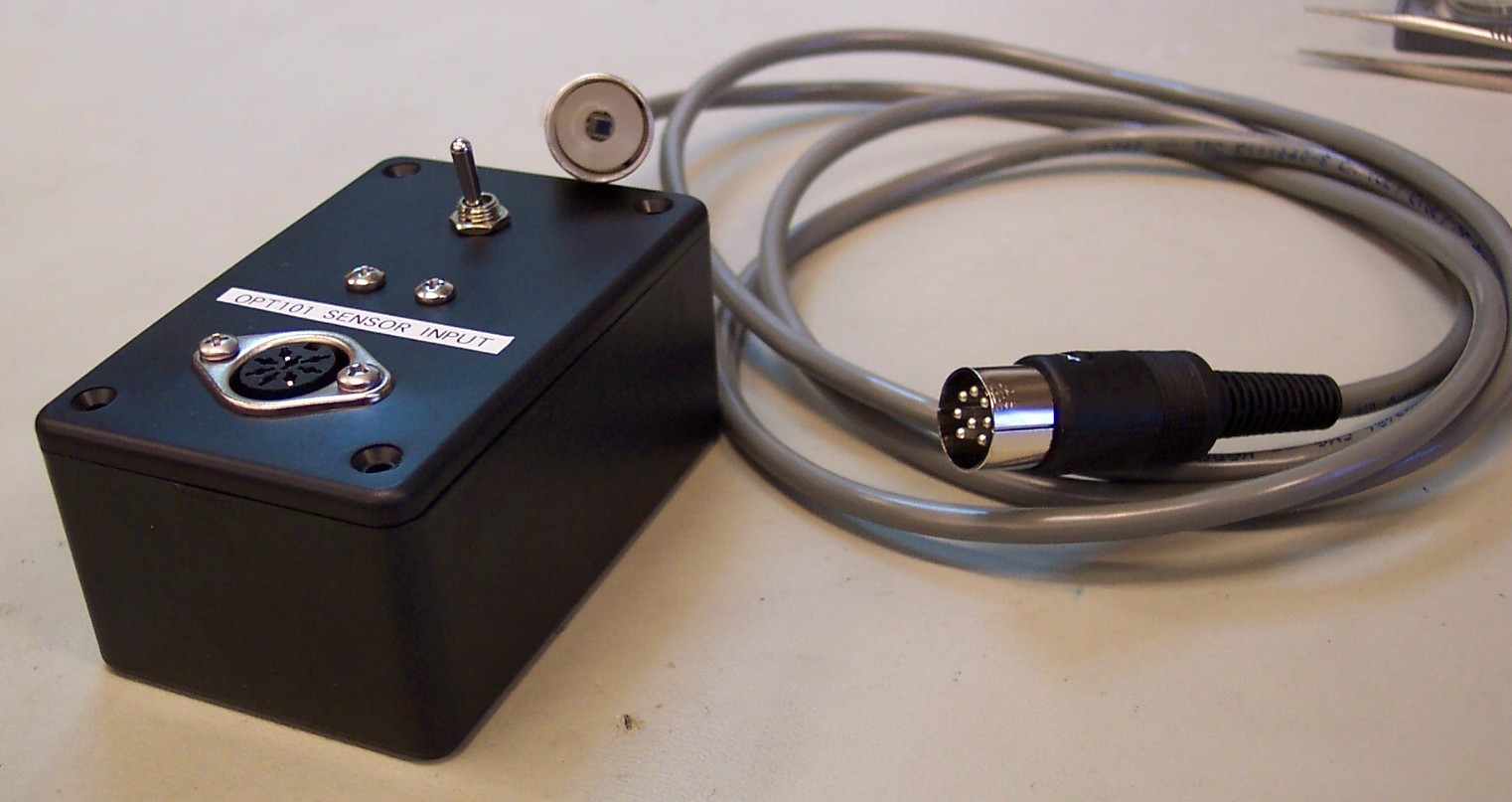
Located in
the center of the aluminum cylinder is a Burr-Brown OPT101
photodiode/amplifier
chip. It is powered by a
9 volt battery
inside the box, and the signal is tapped off and output
on a BNC connector. The cylinder accepts 12 mm optical filters
such as narrow bandwidth
interference types.
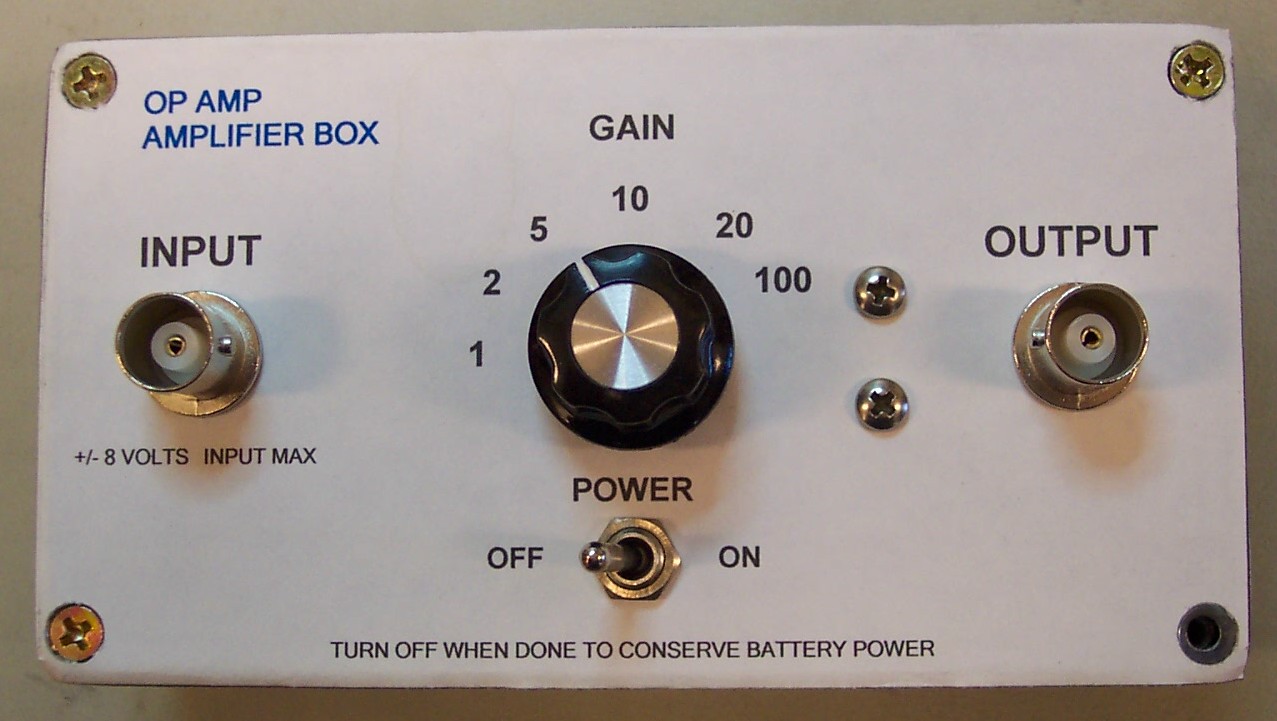
This is a
handy op amp amplifier box for use in labs. It is battery powered
and allows differing
gains to be selected. It uses a precision op amp powered by a 9
volt battery. The negative
voltage is generated by a charge pump converter. The label on the
diecast aluminum box
was created in Microsoft WORD and printed on a sheet of label paper and
then cut
to fit the top.
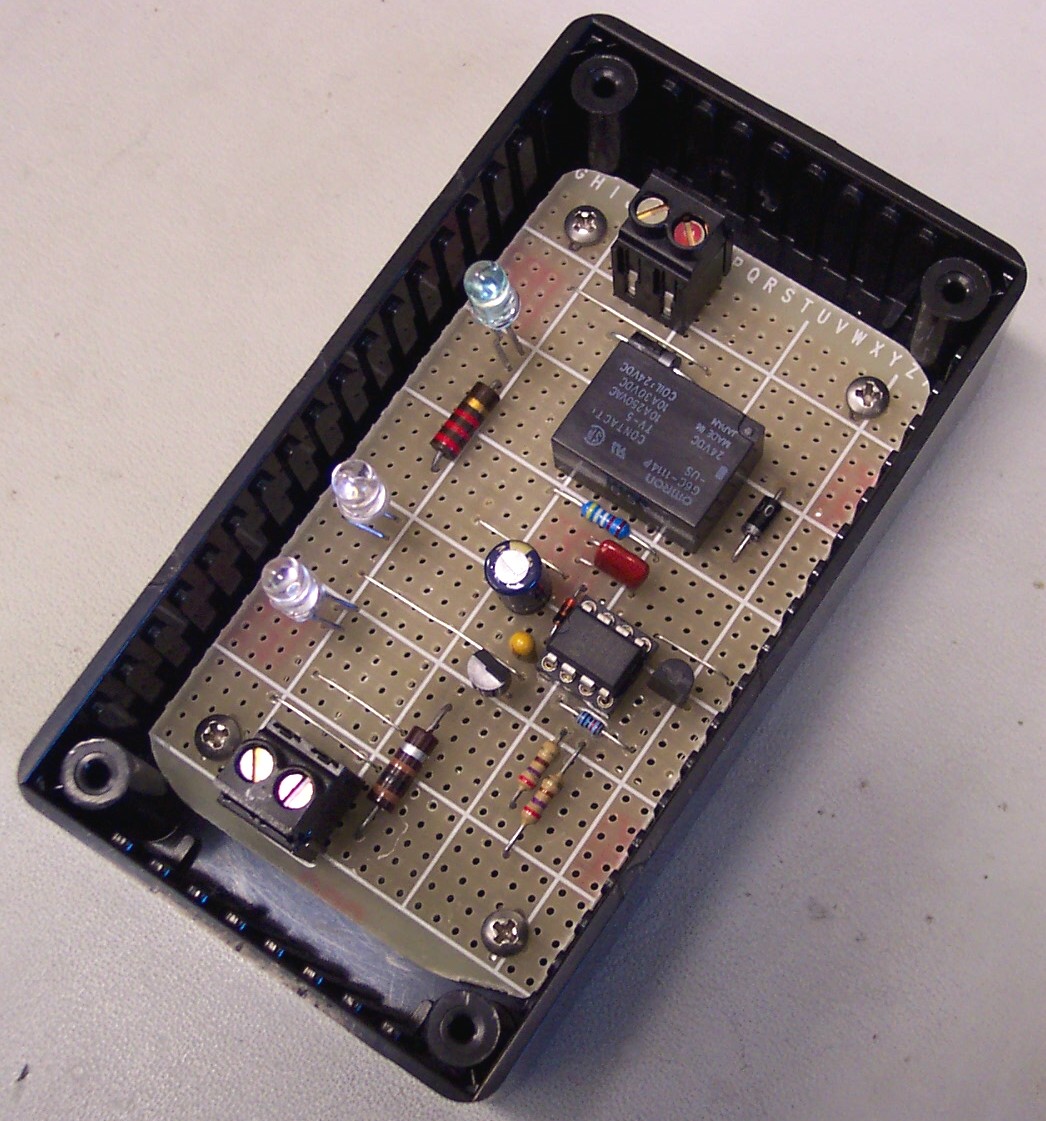
This is the guts
of a time delay relay for a dc powered compressor. It uses an 8
pin Microchip
PIC microcontroller to monitor the 24 volt dc supply. If the
supply
goes out of
range the relay
turns off. Once the power is restored at its operating
specification there is a 10
minute delay
before the relay is turned back on. This gives the compressor
time to equalize
pressures
before trying to start again as might typically happen after a power
outage.









